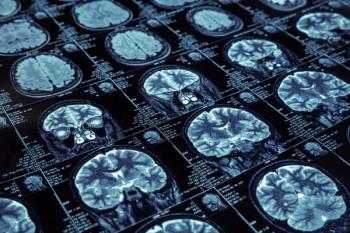
- Volume 0 0
Geriatric Pharmacology
People older than 65 years consume 40% of all prescription medications in the United States.1 When advancing age, frailty, and the use of prescription drugs are combined, drug-related problems are likely to escalate.2 Physiologically, changes vary among individuals, but certain changes are common (Table3-6 ).
Aging also changes drug metabolism and excretion. In the liver, changes in cytochrome P450 or in oxidative pathways may reduce the clearance of drugs such as theophylline.4
Although renal function varies considerably among individuals, studies have shown a renal function decline of 50% by age 85,7 accelerated by such factors as diabetes mellitus and hypertension. The Cockcroft-Gault equation, useful in most populations, may be unreliable in the elderly. Many renally cleared drugs?including digoxin, cotrimoxazole, ciprofloxacin, and histamine2 (H2 )-receptor antagonists?require dose reductions (generally 50%) if the estimated creatinine clearance is less than 30 mL/min, and more severe reductions if it falls below 15 mL/min.
Pharmacodynamics
Pharmacodynamics changes, too,8 making elders more sensitive to the central nervous system (CNS) effects of most drugs, especially if they are cognitively impaired. Many medications?including sedatives, anticholinergics, antihypertensives, narcotic analgesics, and H2 -receptor antagonists?are associated with cognitive impairment.9,10
Psychosocial and Iatrogenic Issues
Up to one fifth of community-dwelling elders and up to one quarter of hospitalized older adults have alcohol or substance abuse problems.11,12 Alcohol potentially interacts with half of the most commonly prescribed drugs.13 The fact that the elder population consumes 2 to 3 times more psychoactive medications than younger age groups also complicates therapy.14
Medication toxicity prompts up to one third of geriatric hospital admissions.6,15,16 Increased incidence of disease, polypharmacy, and altered pharmacokinetic and pharmacodynamic properties of many drugs contribute to the problem. The risk of an adverse drug reaction (ADR) is probably related more to a patient's frailty and medical condition than to age alone.17
Polymedicine describes multiple medications prescribed appropriately for an elder to treat comorbid conditions. Conversely, polypharmacy is an undesirable state of duplicative medications, drug interactions, and disregard for pharmacokinetic and pharmacodynamic principles.18 Leaving polypharmacy aside, it takes only one medication to cause a problem.19 With an estimated adverse-effect rate of 4% for people receiving 5 or fewer drugs, 10% for those receiving 6 to 10 drugs, and 28% for those taking 11 to 15 drugs, the risk is significant.20 The average elder takes 4.5 medications and fills 13 prescriptions yearly.21
Sometimes, clinicians misinterpret an ADR as a new medical condition, and they prescribe more medication, increasing the risk. Some examples are as follows:
- Treating hypertension induced by nonsteroidal antiinflammatory drugs
- Treating "gout" after prescribing thiazide diuretics
- Starting levodopa and adding metoclopramide 2
Drawing prescribers' attention to prescribing cascades may prevent medication misadventures.22
Treatment Adherence
Several studies of elders with common, serious clinical disorders have found compliance rates between 40% and 60% for long-term therapy.23 Enhancing compliance begins with assessing current medications. Limiting the total number of medications, keeping dosing regimens simple, and educating elders and their families are important (Sidebar).
Many patients or clinicians are reluctant to stop medications. Evidence suggests that chronic medication discontinuation creates no adverse withdrawal outcomes 75% of the time. Problems are most likely when several medications are discontinued concurrently, or when cardiovascular or CNS drugs are stopped, so drugs should be tapered one by one.24
Undermedication or Omission
Limited data suggest that many elders who might benefit from drug therapy remain unmedicated. Between 10% and 29% of participants in the Established Populations for the Epidemiologic Studies of the Elderly, reported their health as fair or poor and also reported that they took no prescription medications.25
Pharmacist as Medication Manager
Many elders need a "medication manager," perhaps a pharmacist, nurse, or primary care physician. A pharmacist can oversee and coordinate the prescriptions.18
Ms. Yeznach Wick is a senior clinical research pharmacist at the National Cancer Institute, National Institutes of Health. Dr. Zanni is a health systems consultant. The opinions expressed herein are those of the authors and not necessarily of any government agency.
For a list of references, send a stamped, self-addressed envelope to: References Department, Attn. A. Stahl, Pharmacy Times, 241 Forsgate Drive, Jamesburg, NJ 08831; or send an e-mail request to: astahl@mwc.com.
Articles in this issue
almost 21 years ago
Management of Bacterial Rhinosinusitisalmost 21 years ago
Early RA Treatment Proves Beneficialalmost 21 years ago
Topical Creams Work Temporarilyalmost 21 years ago
Mental Anguish Is Common with Arthritisalmost 21 years ago
Overview of Astrocytomas?The Pharmacist's Perspectivealmost 21 years ago
Scanner Detects Hand Arthritisalmost 21 years ago
OA: All in the Familyalmost 21 years ago
Sheriff Sues Board for Searching His Rx Records Without a Warrantalmost 21 years ago
Restricting the Sale of Cold Medicationsalmost 21 years ago
COMPOUNDINGHOTLINENewsletter
Stay informed on drug updates, treatment guidelines, and pharmacy practice trends—subscribe to Pharmacy Times for weekly clinical insights.



















































































































































































































